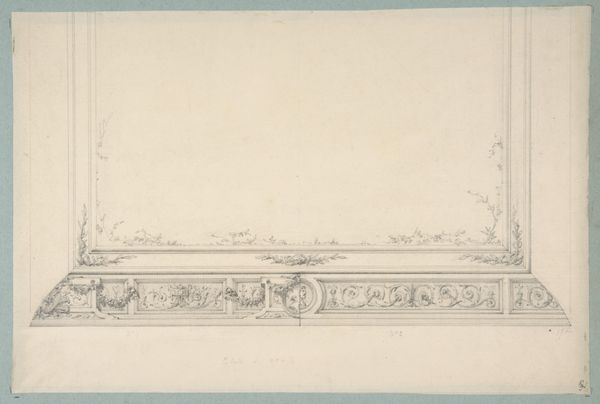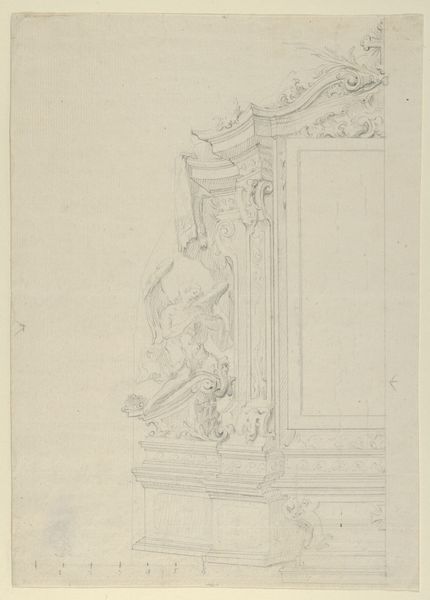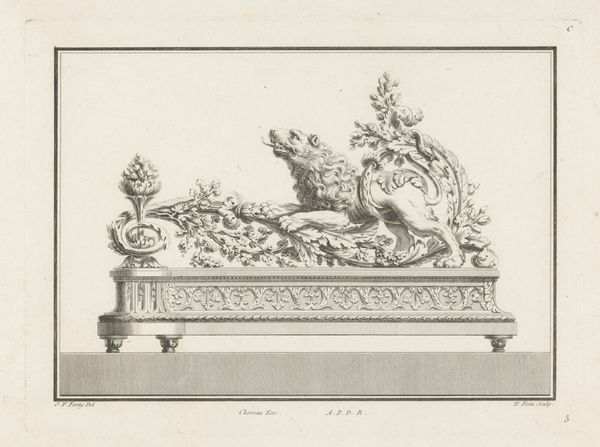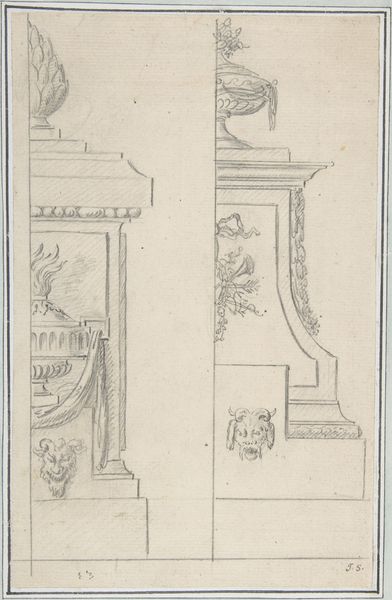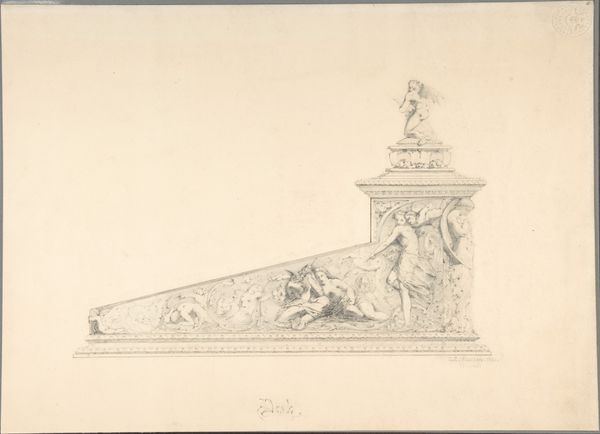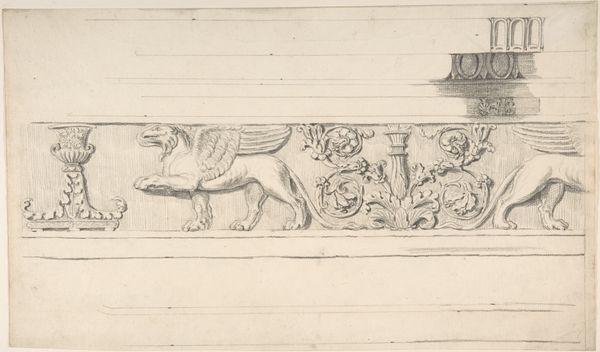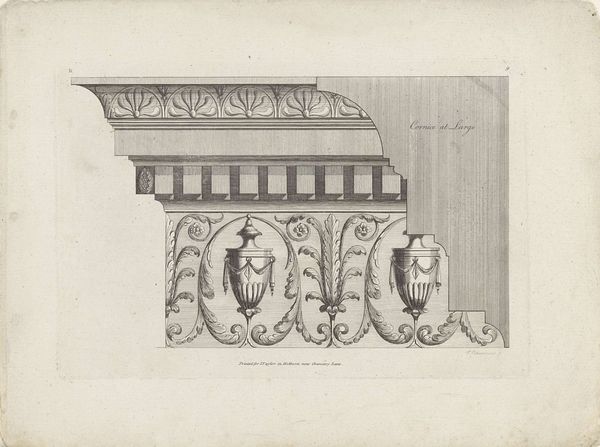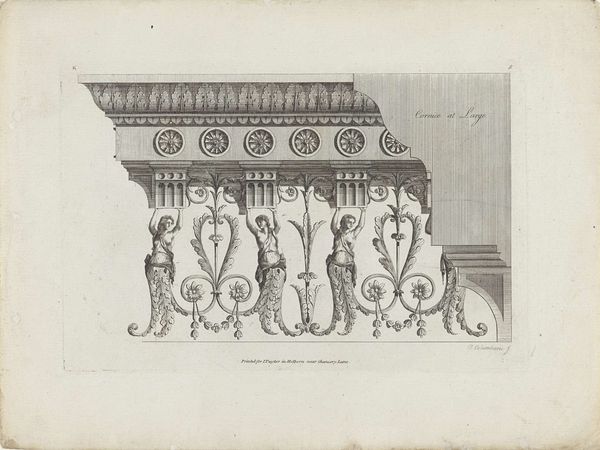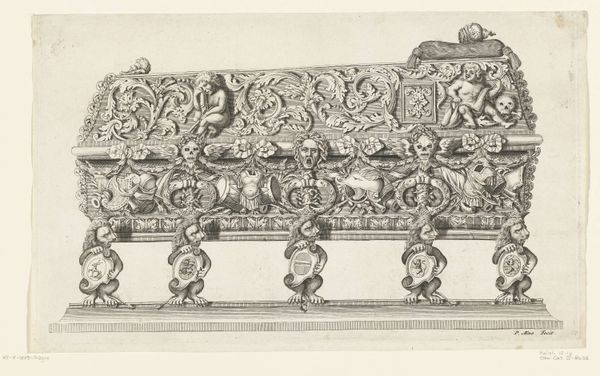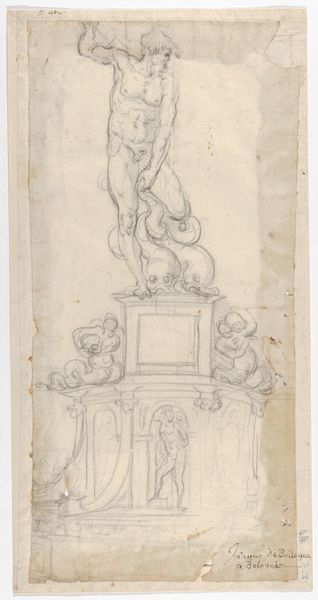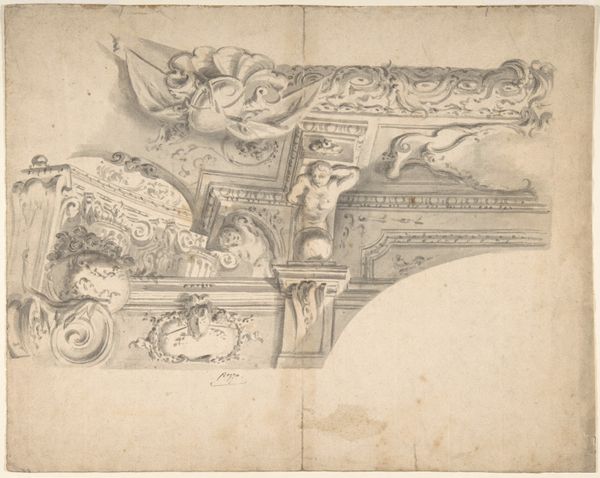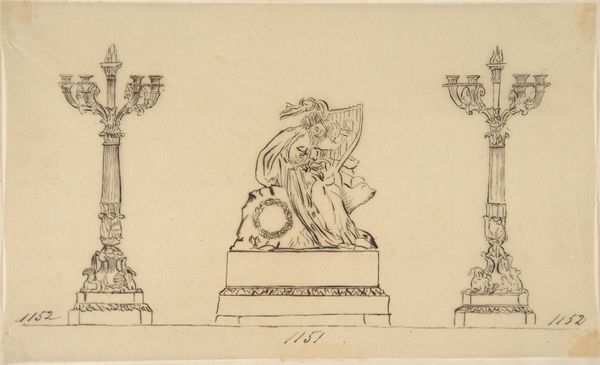
Design for a Stage Set at the Opéra, Paris: Balustrade with Chinese Motif 1830 - 1890
0:00
0:00
Dimensions: Irregular sheet: 3 9/16 x 16 3/4 in. (9 x 42.5 cm)
Copyright: Public Domain
Curator: Let’s spend some time exploring this "Design for a Stage Set at the Opéra, Paris: Balustrade with Chinese Motif" created by Eugène Cicéri, sometime between 1830 and 1890. What captures your attention initially? Editor: I am struck by its seeming solidity. It’s a drawing, but the balustrade has such a grounded, weighty feel to it. It almost fools the eye! Curator: Absolutely. The material is an etching, but Cicéri evokes stone or maybe even marble. He has included Foo dogs seated atop, so it presents an idealized, orientalist fantasy. What’s interesting to you, symbolically, about that choice? Editor: Those lions…or dogs…carry enormous symbolic weight. They’re guardians. I see cultural appropriation for theatrical flair, but I also imagine those guardians warding off bad performances, you know, stage fright personified. Curator: A lovely notion! Stage fright as a symbolic beast, held at bay by art! And look closer; the balustrade's panels also include some fierce dragons, perhaps emblems of Imperial China, here for Parisian consumption. Do you think these imported icons speak more about France than about China? Editor: Without a doubt! They tell us volumes about the European appetite for the exotic "East", which often meant reimagining and romanticizing it for a western audience. But what I see beneath is an ideal of absolute power represented by those dragons, then subtly, charmingly diminished by stagecraft. The French monarchy must have taken delight! Curator: Maybe! Though it can also hint at the inherent Western anxiety about other cultures that we just cannot seem to capture with the accuracy that we covet! After all, this is for the Opéra—fantasy layered upon reality, framed and presented for an audience. Do you think there’s some melancholy in the muted palette? Editor: The Romantic Era favored muted colors for evoking the past and distant locales, but yes, there is some sense of unattainable beauty too. I love to imagine those opera goers, bedazzled by these fake Chinese walls. I feel them watching it and yearning for it at the same time. It becomes less of a place, and more of an object for possession through aesthetic vision. Curator: Fascinating! I came with a fascination for theatrical illusion, but I now see its potent symbolism too, and I see Cicéri has so eloquently given form to French desires and fears. Thank you! Editor: And I must thank you for pointing to a moment where the East met the West on a French stage; where symbolism was so important that dragons still linger even when the curtain falls.
Comments
No comments
Be the first to comment and join the conversation on the ultimate creative platform.

